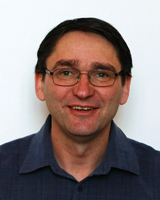KTH researchers have discovered a new molecule
Trinitramid, as it is called, is the new molecule which, among other things, may become a component in future rocket fuels. Fuels which in this case would be 20-30 percent more effective compared to the best rocket fuels available today.

“A rule of thumb is that for every ten per cent increase in the efficiency of a rocket fuel, the rocket’s cargo can be doubled. In addition, the molecule only contains nitrogen and oxygen, which would make the rocket fuel environmentally friendly. This is more than you can say about today’s solid rocket propellants - the equivalent of 550 tonnes of concentrated hydrochloric acid is released every time a space shuttle is launched,” says Tore Brinck, professor of physical chemistry at KTH.
He and a research team at KTH have discovered a new molecule within the group nitrogen oxides, which is something that does not happen every day. It was when scientists were studying the decay of another compound with quantum chemical calculations that they understood that the new molecule could be a stable one.
“As we said, what is specific to this molecule is that it only contains nitrogen and oxygen. There have only been eight such substances discovered so far, with most of them identified as early as the 1700s. This is also by far the largest of the nitrogen oxides. The molecular formula is N(NO2)3, and the molecule is similar to a propeller shape,” says Tore Brinck.

The research team, which besides Tore Brinck, consists of Martin Rahm, Sergey Dvinshikh and Professor Istvan Furo, has now revealed how the molecule can be produced and analyzed. The research team has also managed to produce so much in a test tube that it could be detected.
“It remains to be seen how stable the molecule is in solid form,” says Tore Brinck.
It was when they were in the process of trying to find an alternative to today’s solid rocket fuels that the research team found the new molecule. The results will be published soon in the prestigious journal Angewandte Chemie International Edition.
For more information, contact Tore Brinck on 08 - 790 82 10 or tore@physchem.kth.se.
Peter Larsson

